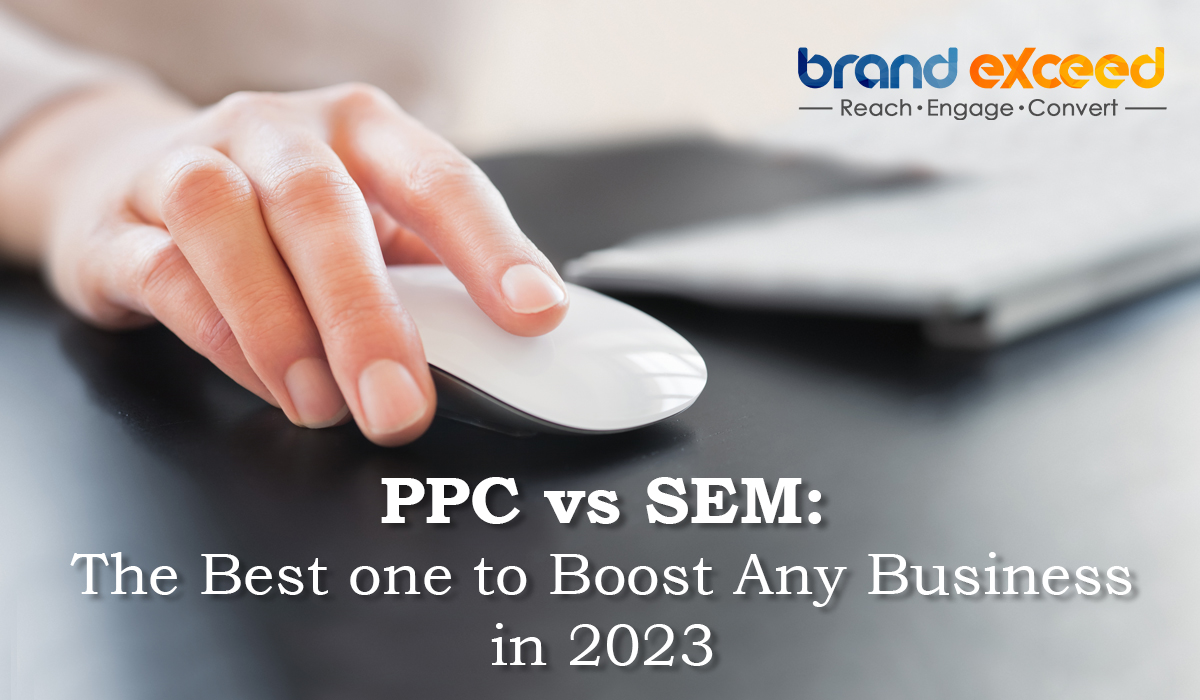Online marketing calls for a completely different skill set than traditional marketing. Several technical jargons and acronyms designed to improve your brand’s online visibility are sure to pop up as you delve deeper into online and digital marketing.
But initially, it can be intimidating to understand these concepts. SEM marketing was deemed an inactive component of marketing plans by 72% of small enterprises. You risk missing out on many chances and a sizable customer base if you don’t understand the fundamentals of online marketing and the distinction between SEO and SEM.
Digital marketing is the most excellent strategy if you want your firm to be accessible online. When appearing on search engine results pages, there are both paid and “free” (also known as organic) choices to consider in the form of PPC or pay-per-click advertising, including SEO or search engine optimization.
Many experts may claim that you need either SEM or PPC, but not both. However, in actuality, you require both. Here, we’ll explore the SEM vs. PPC argument to learn more about the differences between the two marketing techniques and how they complement one another to increase your consumer base and strengthen your online presence.
You’re not the only one having trouble spreading the word about your brand-new company. Like your business, many business entrepreneurs initially struggle to attract clients. Balancing a marketing campaign’s costs, maintenance, and outcomes can be challenging. Usually, one of the two marketing techniques—pay-per-click (PPC) campaigns or search engine optimization (SEO)—will solve this issue.
What Is PPC?
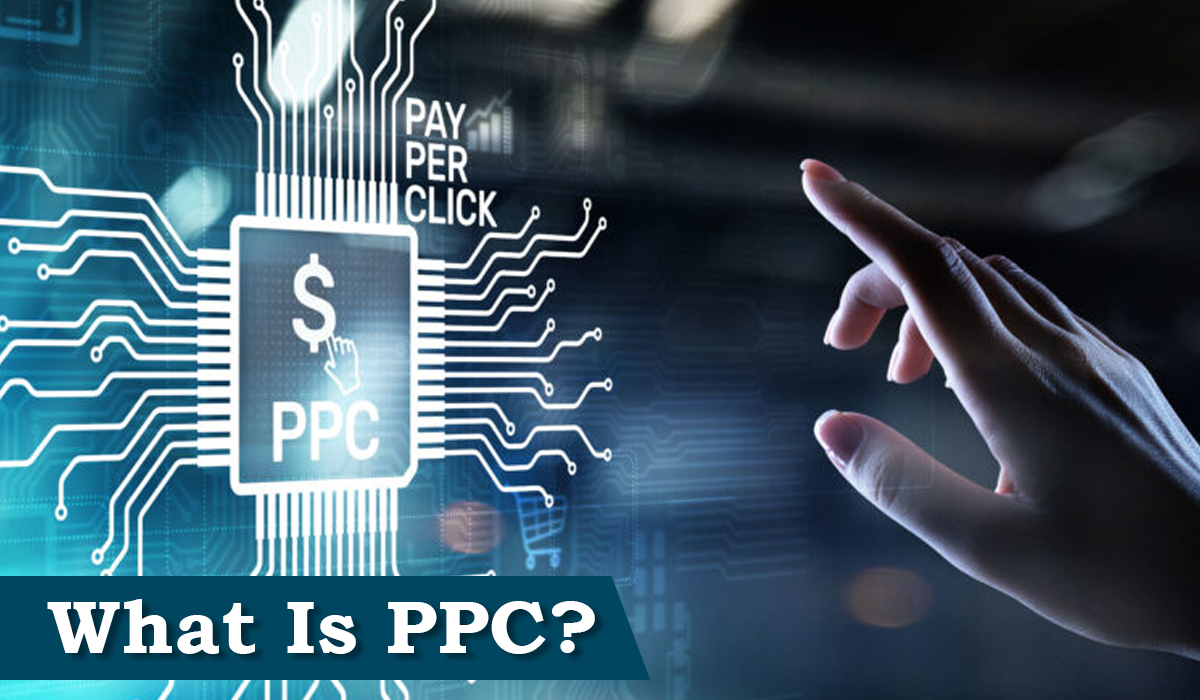
The pay-per-click marketing industry is a unique species. PPC calculates the cost of an online ad using a formula, and regardless of the result, advertisers charge each time a user clicks on that ad. Businesses must pay for the click regardless of whether a customer places a sizable order or instantly leaves the website. The pay-per-click can be significantly influenced by the PPC advertiser’s bids on particular keywords or by paying a fixed fee per click that varies according to the network and publisher they are using.
Every company has two options for bringing customers to its website: organic search or paid search. More than 75% of businesses concur that visitors who arrive via paid adverts are more likely to convert into customers than visitors who arrive via organic search results. As a result, companies of all sizes are more likely to spend most of their money on PPC advertisements since they believe doing so will lead to strong conversion rates and, ultimately, the desired ROI.
PPC ads are often the banners you see at the borders of search results windows and frequently the first listings you see here in search engine results; they will identify as ads or sponsored results. Additionally, some websites provide PPC opportunities. PPC ads come in various forms, and display advertising is one of them. For instance, one display advertisement might combine text, video, and images. Your ultimate objectives will determine what is most effective for you.
The main advantage of PPC is that since you are paying for the ad space, you can be guaranteed to appear prominently in user searches. Compared to the complexity of SEM, PPC is also relatively easy to set up and understand. PPC fees, on the other hand, merely ensure visibility; as was already noted, you pay regardless of the result of the click.
What Is SEM?
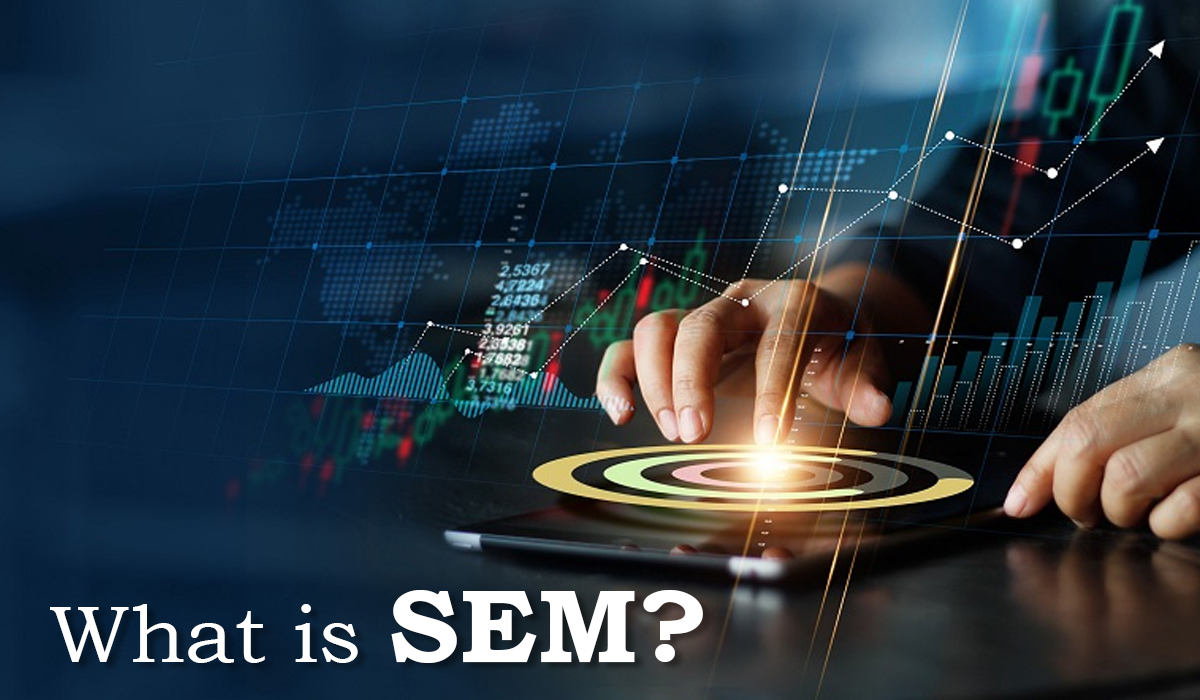
All digital marketing strategies, whether gratis or paid, fall under the broad heading of search engine marketing (SEM). Increasing the website visibility of your business on search engines, such as Google, Yahoo, and Bing is the primary objective of SEM. Google is the most well-known search engine, and SEM is also known as search marketing.
SEM includes pay-per-click (PPC) advertising and search engine marketing (SEM). Since most new website visits originate from Google searches, SEM has become essential to a business’s marketing strategy. Manufacturers have an opportunity since consumers are researching you online and can be exposed to marketing messages because they are using search engines to discover information. However, you must ensure your content speaks to them personally, or they will not click.
Paid advertising allows you to purchase ad space on the SERPs, which promises quicker outcomes than SEO’s gradual process. SEM tactics are now a significant component of contemporary marketing. It makes sense to engage in search engine marketing because of the enormous potential for new leads and earnings, even though social media, email, & direct mail still have their uses.
Please spend some time crafting an effective SEM plan that addresses the particular requirements of your target market, then continually improve it to help your company expand.
As was already noted, “search engine marketing” refers to using search engines to promote products or services. Despite the term’s general connotation, it only really has one use, which has to do with search engines and sponsored search techniques. Google Ads is one of the numerous sponsored search methods available, while other websites like Yahoo or Bing can also utilize it if necessary. Google Ads is also the most popular.
SEM makes the most of a search engine’s capability, like Google, to ensure that marketing information reaches clients at the perfect time of need and helps turn a lead into a sale.
Pay Per Click vs Search Engine Marketing
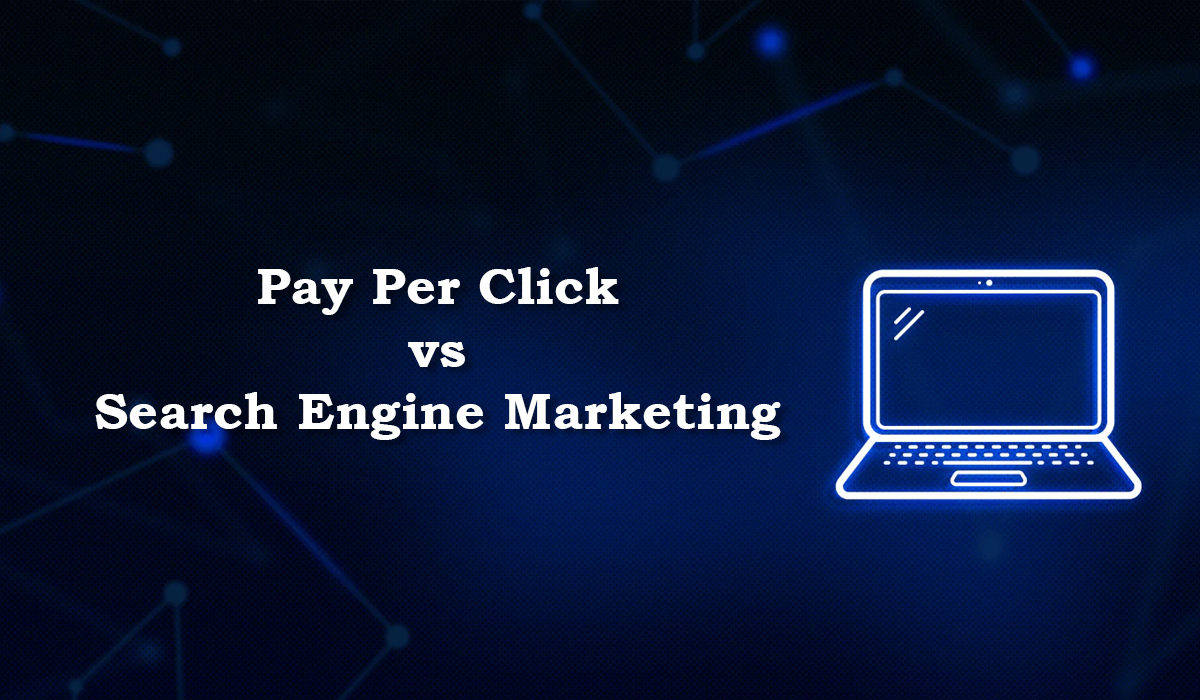
- Pay Per Click (PPC)
There is a reason why PPC advertising is so popular among companies. Numerous factors contribute to its excellent marketing effectiveness. Following are the top 5 advantages of PPC advertising:
- PPC Places You First in Search Results
PPC advertising, instead of organic results, appears first for most searches. Due to the fact that your company will display first, there is a greater likelihood that users will see its details and click its advertisement before moving on to the organic results.
- PPC Costs Can Control
PPC is expensive, but you have complete control over its price. You will always be aware of the PPC cost because it will never exceed the budget you established at the start of your campaign.
- PPC Helps to Get Quick Results
With PPC advertising, you can see results very quickly, unlike SEO. Your paid outcome can appear instantly. However, a blog article may take some time to move to the first page.
- PPC Has a Targeted Audience
With PPC, you can control when and where your ads appear, ensuring that your key target group sees them. As a result, you have some influence over who sees and clicks on your advertising, which helps to increase your overall return on investment.
- PPC Is Simple To Measure
Most PPC platforms offer some analytics to determine the effectiveness of your campaign. You get access to data like clicks, site visits, and prices that can help you assess how well you are using your marketing budget.
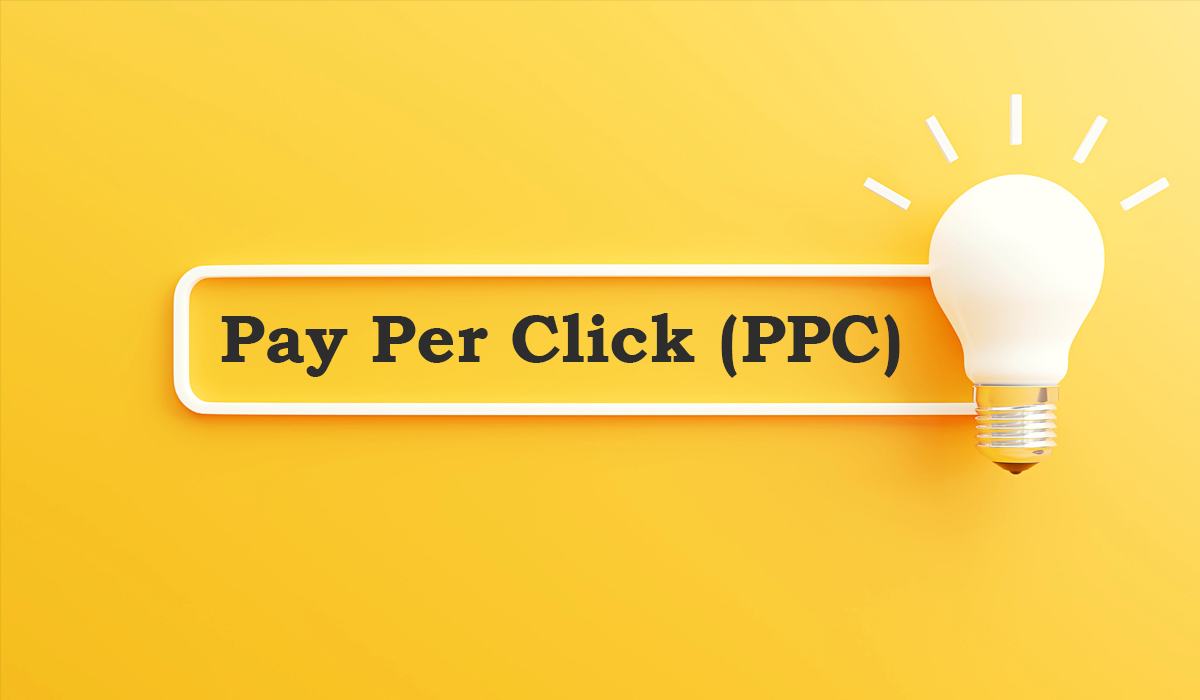
How do PPC Functions?
PPC (Pay Per Click) is a method that enables you to rank highly on result pages of search engines and has your results appear before organic results if you want quicker results. In contrast to SEO, this strategy needs funding because you’ll charge money when someone clicks on your advertisement. That is the cost of leaving first.
What Varieties of PPC Advertisements Offer?
- Advertisements on the search network.
- Advertisements on the Display Network.
- Advertisements for stores.
- Video advertisements
- PPC advertisements in the RSS feed.
They are additionally organized according to keywords to enhance the quality of searches. It would be best to analyze your PPC campaigns to determine whether everything is operating correctly.
Search Engine Marketing (SEM)
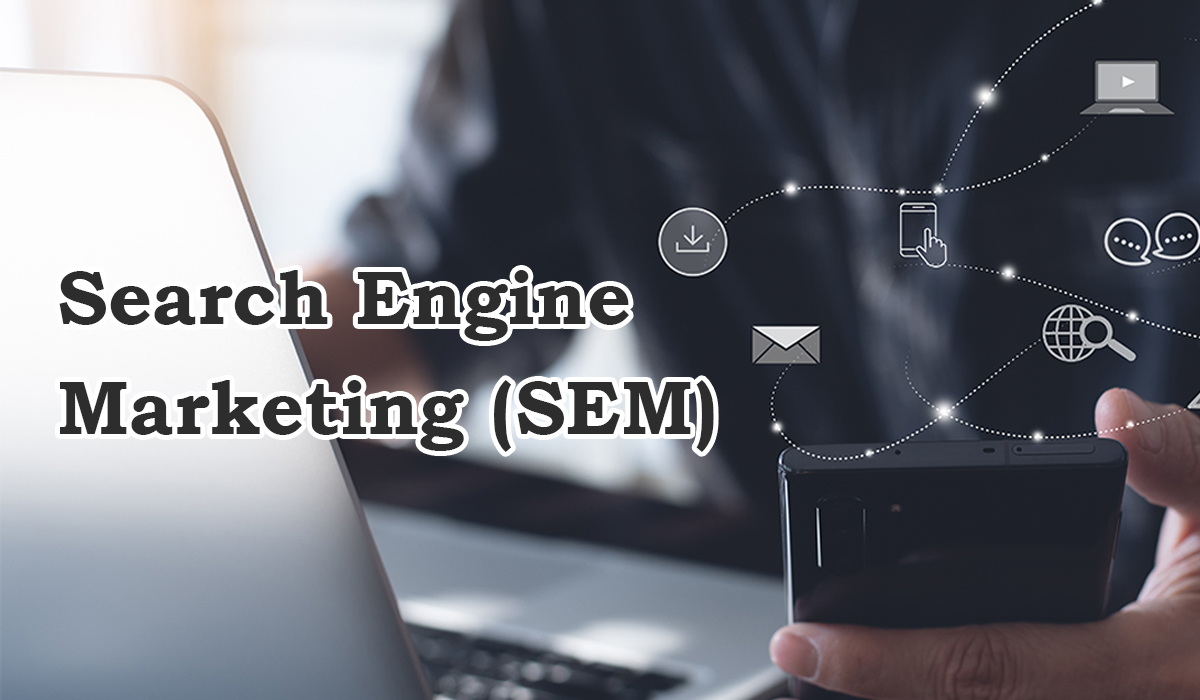
SEM is a successful marketing tactic that gives your company lots of freedom. The following are a few of the best advantages of SEM:
- It boosts the value of your products and services brands by raising awareness.
- It improves the recognition of brands (and website traffic).
- You can market to a group of people who are already interested in your business.
- You can increase qualified leads.
- You can target consumers with your adverts based on their regions and preferred languages. Your edge over rivals is increased by it.
- Compared to other forms of advertising, it produces a more considerable ROI.
There are many advantages when it comes to utilizing SEM to create a strong marketing portfolio. SEM can help your brand in several ways, some of which are listed below:
- Immediate Brand Awareness: As already established, SEO & organic social media traffic take time to provide results. Improving quality and rankings on Google can take around a year.
A first-page ranking is assuring if you use SEM in this situation. A lot of attention can be attracted rapidly when moving from low visibility to the top page of search results.
Instant Revenue Generation: Sales can arrive the same day with a proper campaign strategy and the best ad copy! - Sales And Marketing: Even small-scale marketers may quickly get started with SEM because it is highly scalable. However, before spending money on SEM, it is crucial to determine what strategies are effective and which ones are not.
Ad volume can rise gradually as sales rise, which propels the company forward and makes it successful. Ads can also be removed and changed for effectiveness if they are not performing effectively. A brand’s establishment can benefit significantly from spending as little as $8. - Good Reachability: Consider that more than 3.5 billion people use search engines to initiate online presence, which accounts for 92% of all online activity. The primary source of visitors to websites is search engines.
Avoid These 11 Common SEM Mistakes
It takes some skill to become proficient at SEM. Some common mistakes to avoid include the following:
- Relevant Ads – If your ads and landing pages don’t match, you’ll annoy and alienate potential customers. Un Compelling ad copy Online content is already in excess. Your copy won’t succeed if it is uninteresting or monotonous.
- Ignoring Keyword Match Types – Match types allow your financial management and assist in finding the right balance between audience reach & keyword relevance.
- Forgetting to Optimize for Mobile – Avoid this error in 2023! You can’t ignore it any longer because we are living in the mobile age.
- Ignoring User Intent — In today’s customer-centric world, user intent is essential.
- Navigation Issues on your Website – A bad experience will raise your bounce rate.
- A lack of Efficient Measurement – By failing to assess the effects of any changes, you risk wasting your data. A small CTA can make all the difference when you’re not asking your customers to take action.
- Failing to Utilize Ad Extensions – Why lose the chance to provide your prospects with essential information?
- Avoiding Remarketing – Remarketing may seem like spam, yet it has a lot of benefits and gets results despite your perceptions.
- Ignoring Your Competition—you can get knowledge from them!
How Do SEM Functions?
The fundamental steps of SEM are as follows:
You, the advertiser, will choose the keywords to target your ads. These keywords should be appropriate for your target market and your goods or services.
After that, specify the highest cost per click (Max. CPC) you’re ready to spend for a single person to click on your advertisement.
The matching ad will appear in SERPs whenever a user search contains one of the related terms or phrases on your target keyword. Paid advertisements are ordered following the quality score, which places the highest bid, and a few other considerations.
You’ll charge for any clicks made on your advertisement by users.
Pros and Cons of SEM & PPC
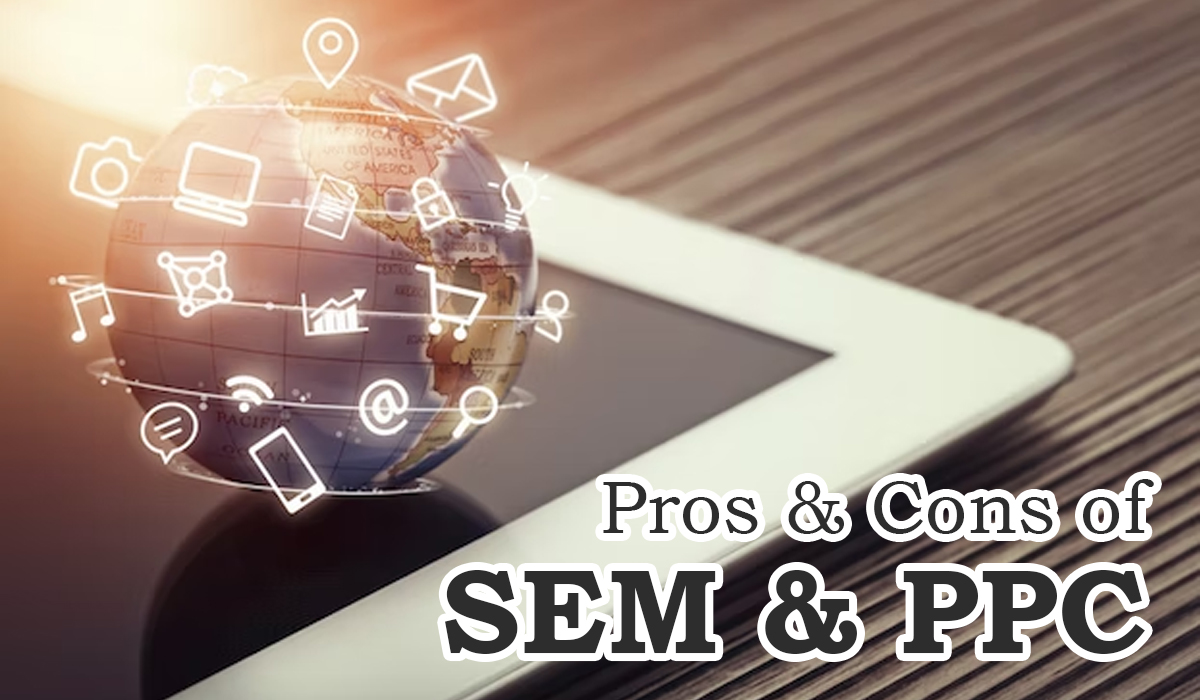
The Pros and Cons of SEM & PPC are Listed Below:
SEM:
To increase traffic, one must purchase advertisements; while this can be costly, the effects are immediate.
SEM is known to diminish your company’s trust because consumers prefer organic search results.
Utilizing various SEM strategies, you may monitor your outcomes and payout. A further benefit is that the adverts are independent of the search engine’s algorithm.
PPC:
The outcomes can be unpredictable, but you must pay for them.
Google’s network allows you to market your company on many websites and PPC networks. However, it can damage your credibility.
Using tools like Google Analytics, you may monitor progress and outcomes.
What About Using a Combined Approach?
What if the debate between SEM and PPC wasn’t black-and-white? Could you combine the best aspects of both worlds? There are numerous benefits to combining the two:
Instantaneous traffic to provide feedback on your entire marketing strategy and your present financial situation.
The potential of your PPC results to guide your long-term SEM initiatives.
Rapid brand recognition can lead to sustained client engagement.
Spend less money using SEM to target expensive keywords and PPC ads to target less expensive ones.
You can remove your advertisements when money is tight and depend on organic results to keep your site traffic.
The two methods of driving traffic are not mutually exclusive, as you can see. One can even support the other if done correctly.
Which One is the Best for Business?

As mentioned, SEM and PPC both provide excellent returns on investment. Is choosing between spending time and money the fundamental choice you must make? Every method of driving traffic can produce positive outcomes, but each requires a unique upfront commitment. Depending on your circumstances, you should choose the appropriate one.
You should better understand what each choice will give you by this point. Of course, in a perfect world, you would have the resources—both time and money—to combine the two possibilities.
Even so, you now have all the knowledge necessary to decide what to do next, even if you don’t live in an ideal world.
The question of which approach will work best for your business remains after understanding how SEM and PPC differ and the benefits of each. The ideal course of action is to combine them; that is, SEM and PPC can operate in tandem to enhance your ranking in the top places of search engines and therefore accomplish your SEM objectives.
Would you like your brand to appear in the top results on the major search engines? One of the top digital marketing firms in California, RedBlink, assists you in optimizing your SEM campaigns and positioning your website through effective SEM. Get in touch with us to begin your new digital development.
Conclusion
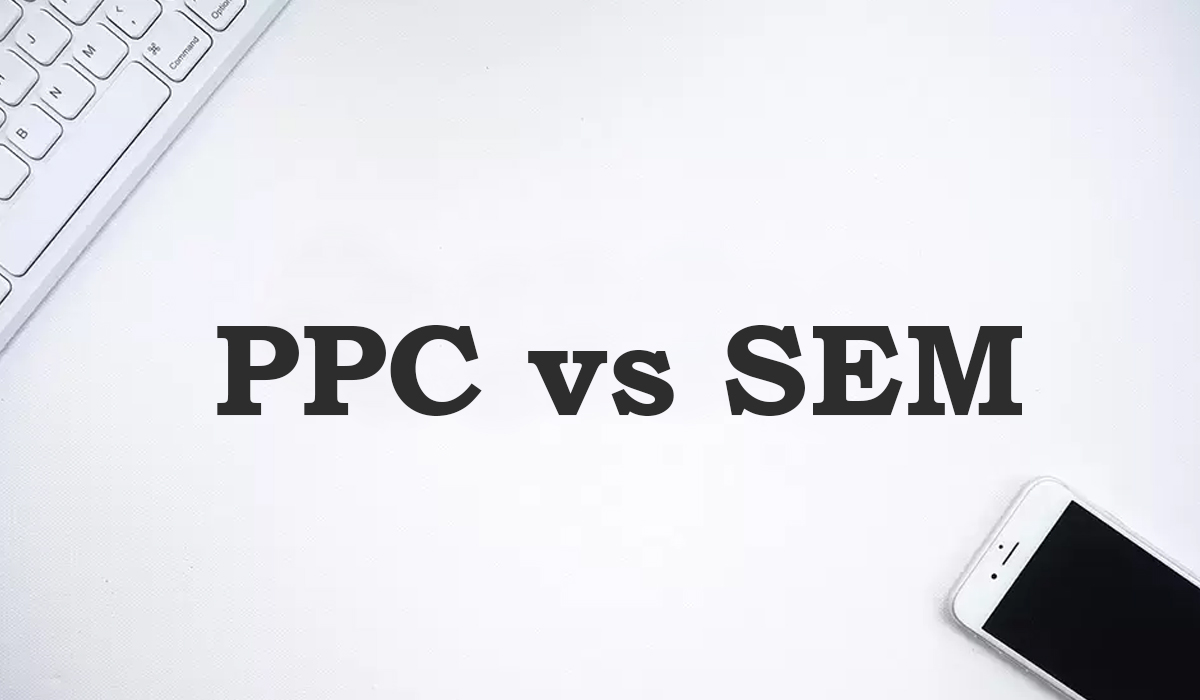
The credibility of your company may suffer if you use SEM without SEO. This is because, even if people visit your website by clicking on the links in the advertising, they might not use your products or services if they cannot locate the information they need on the page. If your involvement is low, people won’t stay on your site for longer. The cost of your adverts and keywords will then increase.
The campaign’s budget will increase when PPC and SEO are combined. PPC has a broader reach than SEM across various channels and social media.
Despite being two different marketing components, PPC and SEM shouldn’t be viewed as independent initiatives. Instead, combining SEM and PPC is an excellent approach to drawing attention to your company and producing leads. SEM and PPC have a place in your marketing efforts, whether you’re just starting with your website or have been active online for years.
Ultimately, your business scenario will determine whether you pick SEM or PPC. Consider the advantages and disadvantages of both SEM and PPC carefully to determine which is best for you. To get even more remarkable outcomes for your company, combine the two approaches.

